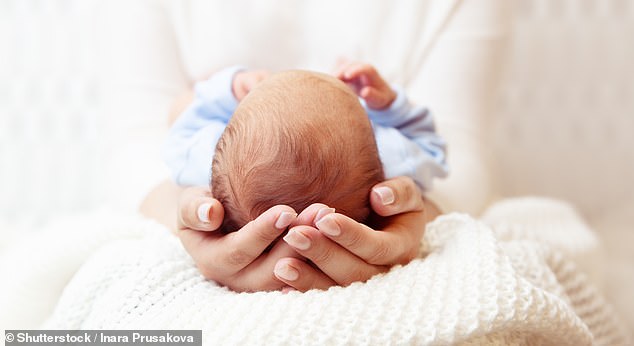Not getting enough iron during pregnancy could raise the risk of babies being born intersex, a study suggests.
Scientists have found for the first time that pregnant mice deficient in the mineral are more likely to give birth to males who have female genitalia.
This deficiency during pregnancy is most often caused by a lack of iron in the diet, which can naturally come from eating iron-rich foods like red meat, red kidney beans, edamame beans, chickpeas, nuts and leafy green vegetables.
A simple blood test can determine a woman’s iron levels and if she is deficient, a supplement can be prescribed. Sometimes, it is recommended to also take vitamin C, which can help the body absorb iron more effectively.
It is already known that iron plays a role in organ development, and another recent study showed babies born to mothers with low iron levels were more likely to suffer heart defects.
But the new evidence suggests the mineral could also influence the development of sex organs.
The recent study is the first time a dietary mineral has been found to trigger intersex, which occurs in one to two percent of the population, and while the team said there hasn’t been any research to make this link in humans, they believe it could play a role.
Lead researcher Vincent Harley, a molecular geneticist at the Hudson Institute of Medical Research in Australia, said this ‘presents an exciting new area of study.’

Not getting enough iron during pregnancy could raise the risk of babies being born intersex, a study suggests
Intersex is a condition in which individuals have genitals or reproductive organs that do not fit the typical binary definitions of male or female.
People who are intersex may also have chromosomes that differ from the typical male and female binary. Their genitals may not match their reproductive organs or they may have traits of both. This can include variations in external or internal reproductive organs.
In mammals, biological sex is determined by the presence or absence of a Y chromosome — females typically have XX chromosomes whereas males typically have XY ones.
Then, a primary gene is responsible for formation of the corresponding sexual organs, such as testicles and penis or ovaries and vagina.
Mice, for instance, with XY chromosomes usually develop testes if a gene called ‘Sry’ (Sex-determining Region Y gene) is activated and ovaries if it is not.
The researchers behind this latest study had previously shown that Sry is activated by an enzyme called ‘histone demethylase,’ which needs iron to function.
In their new lab tests, they looked at how iron levels would therefore impact the development of sexual organs in unborn babies.
In one of their trials, the researchers gave mice with low levels of histone demethylase an iron-deficient diet for a month before pregnancy and for two weeks during pregnancy, and compared them with mice that were fed a control diet.
The levels of hemoglobin and red blood cells were lower among iron-deficient mice than in the control-diet mice, as expected.
But two of the 43 male babies carried by iron-deficient mothers also developed female-typical sex organs.
All the control mice grew sex organs typical of their chromosomes.
Other tests, which dug into the impact of iron further, revealed similar results.

Iron deficiency during pregnancy is most often caused by a lack of iron in the diet
In one study, four mice with XY (typical male) chromosomes were born with two ovaries and one with one ovary and one testis.
It could be posited that when iron levels are low, the enzyme ‘histone demethylase’ may not activate the Sry gene, which is responsible for the development of male sex organs and reproductive organs.
Because of this, mice with XY chromosomes may develop female – or both types of – organs.
Emerging evidence suggests maternal diet and exposure to environmental toxins can affect gene activity involved in the early development of testes and ovaries.
The latest findings could have implications for medical advice about iron intake during pregnancy, Harley adds.
A separate study investigating the link between iron and organ development found babies born to mothers with low iron levels are far more likely to suffer heart defects.
Scientists now posit anemia – low levels of red blood cells due to low iron levels – in pregnant women may be to blame for about one in 20 congenital heart disease (CHD) cases.
The deadly condition is one of the most common types of birth defects.
The study, by the British Heart Foundation, analyzed the data of 16,500 mothers and found the chances of having a child with CHD was 47 percent greater in women with low iron levels in their first 100 days of pregnancy.
Experts will now investigate whether taking iron supplements before and during pregnancy could help prevent heart defects.

